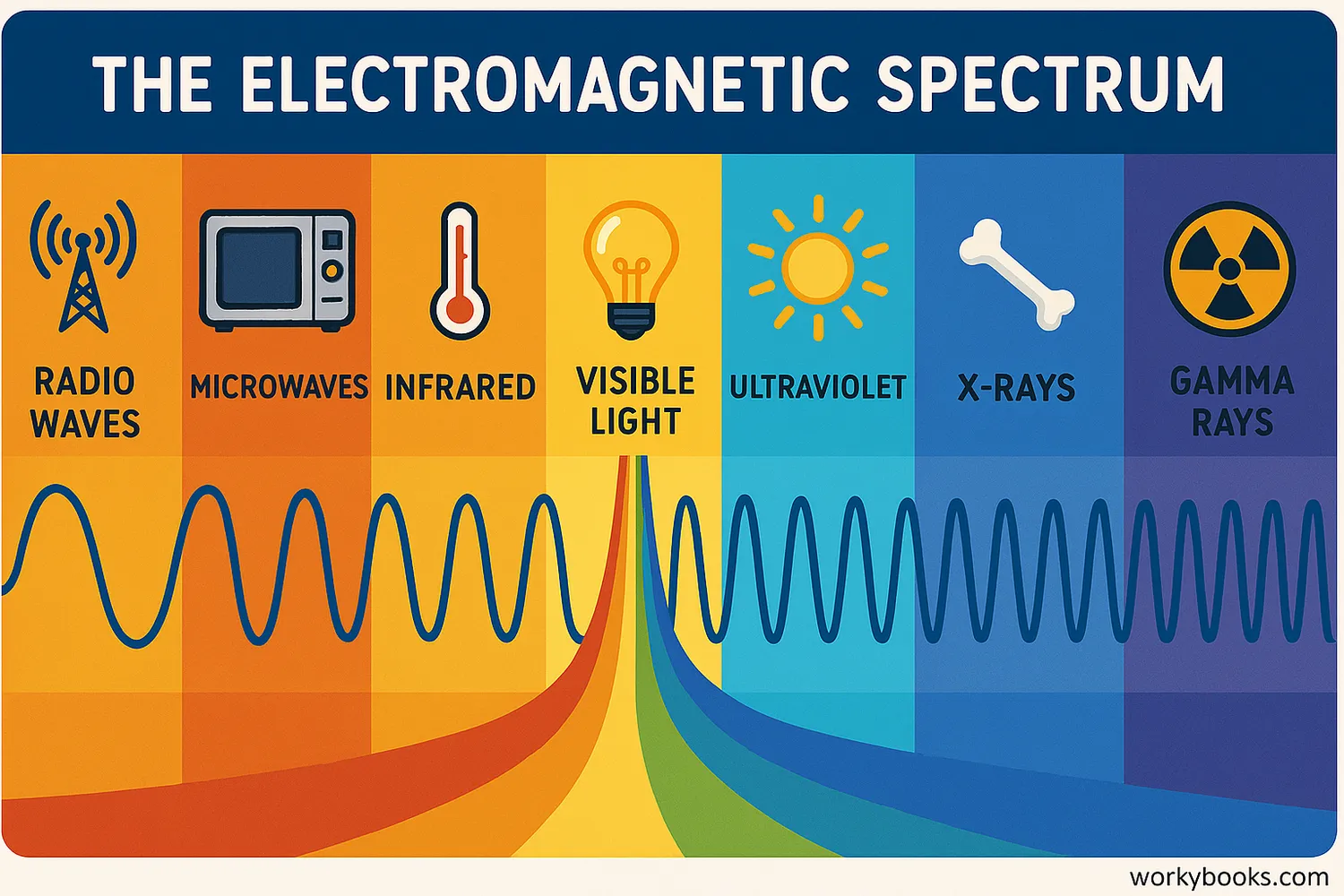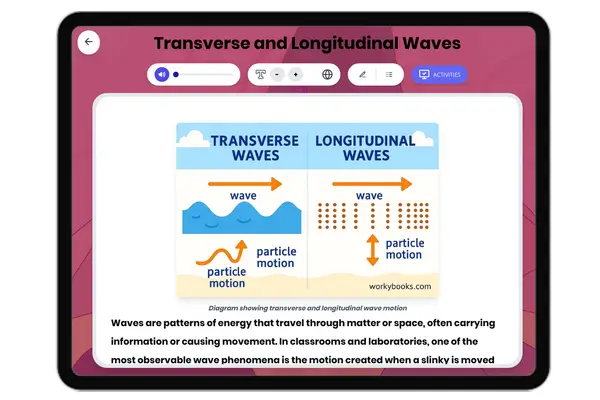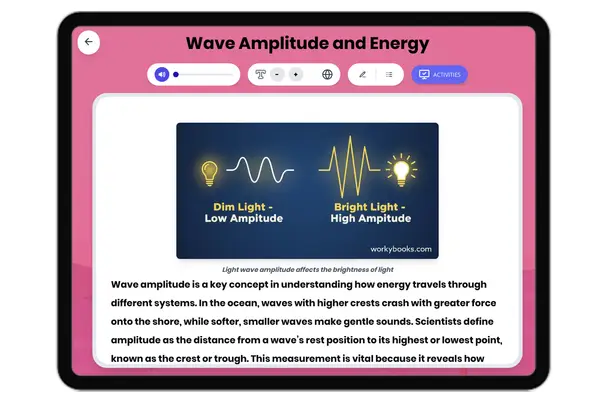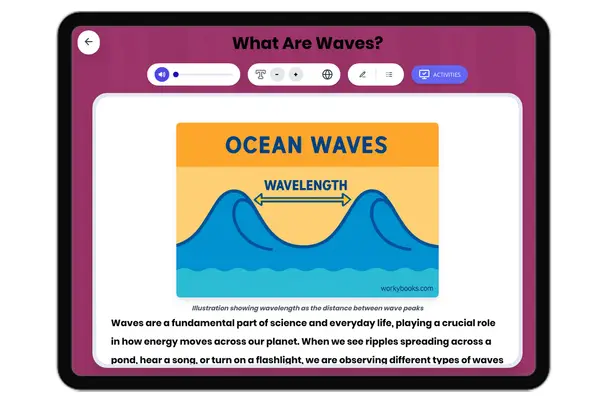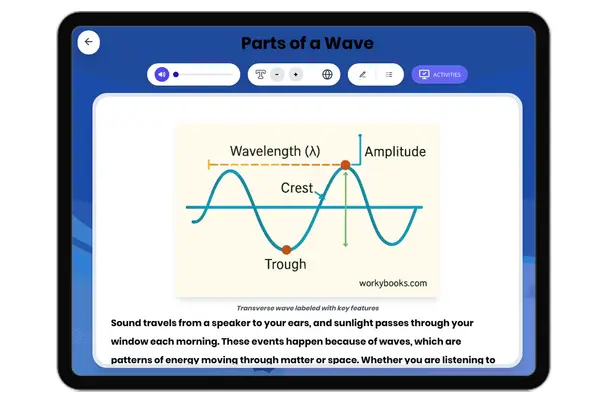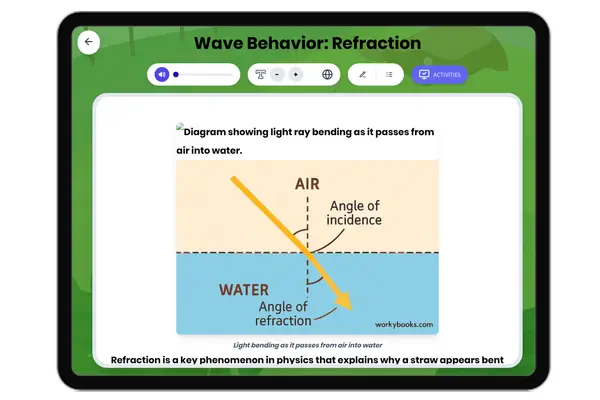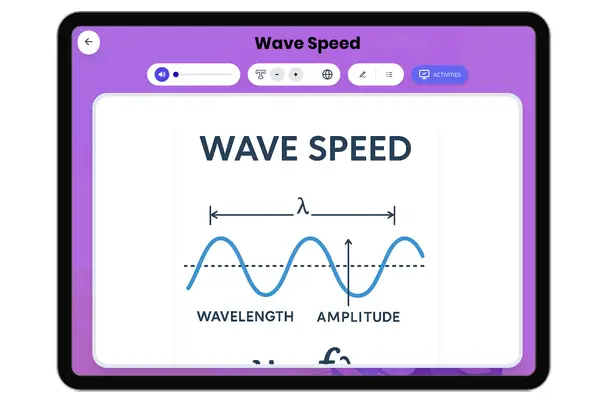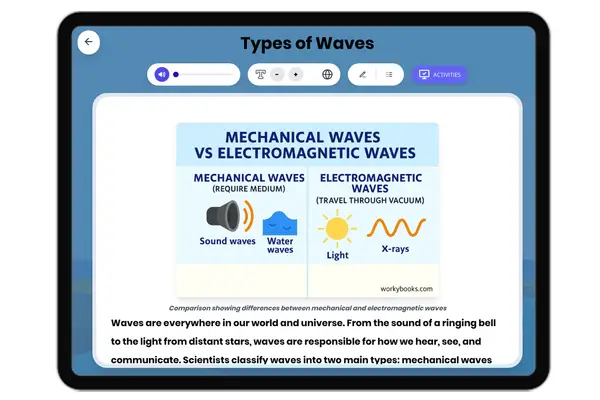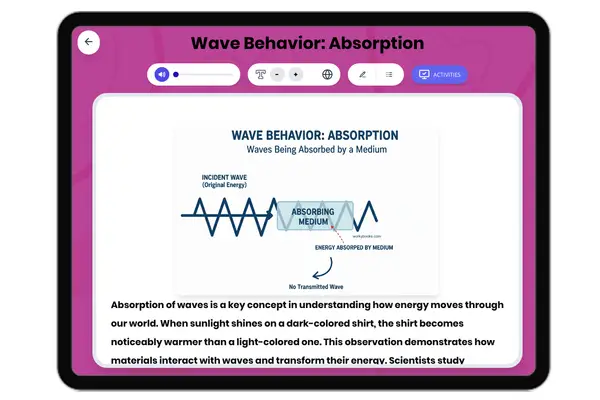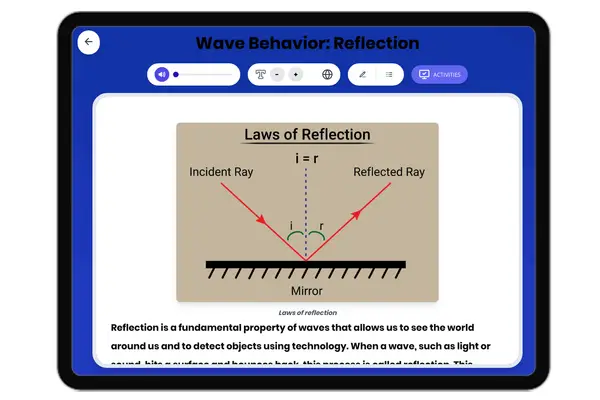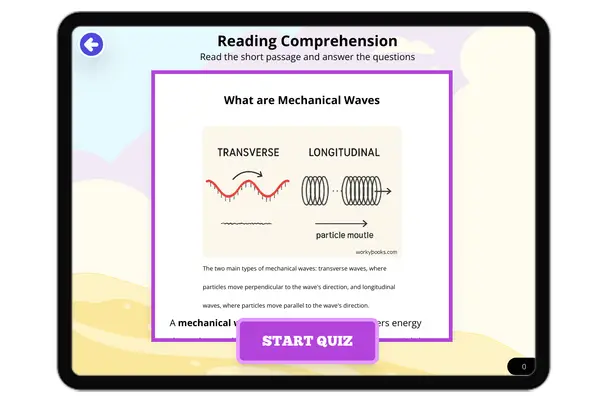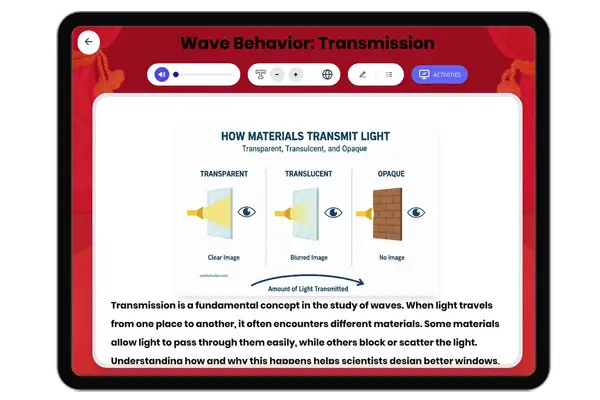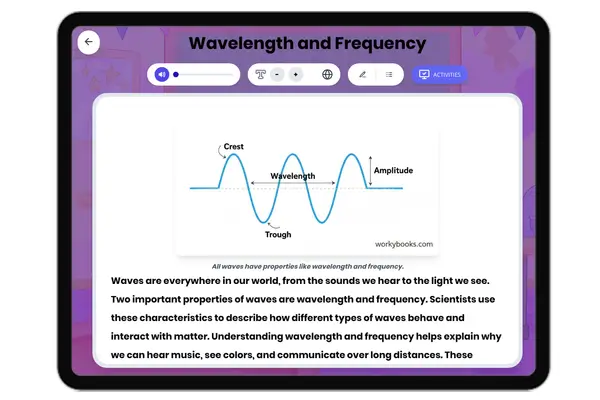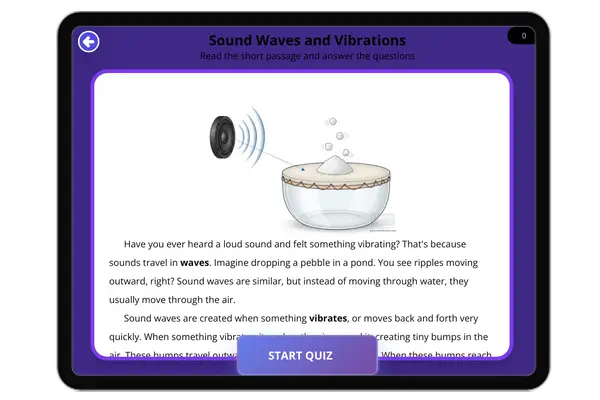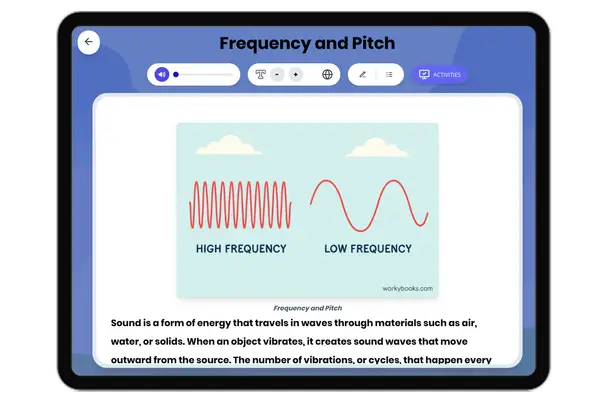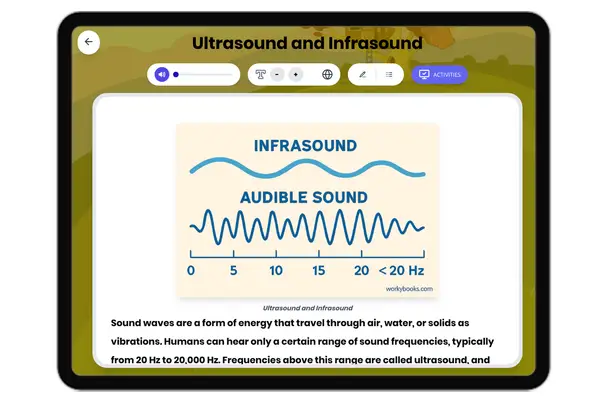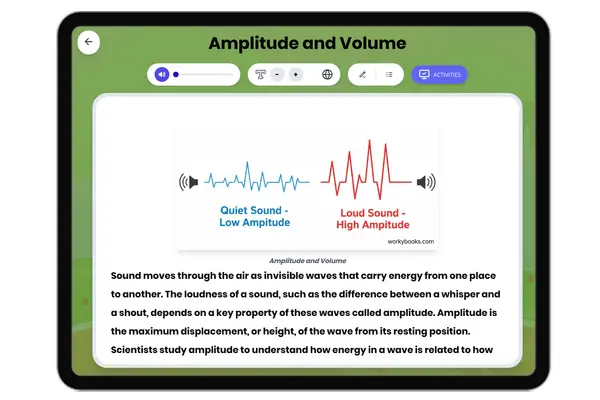Which Type of Radiation has the Shortest Wavelength? — Reading Comprehension
Premium Resource
Grades
- 3
- 4
- 5
- 6
- 7
- 8
PRINT+DIGITAL RESOURCE
This learning resource is available in interactive and printable formats. The interactive worksheet can be played online and assigned to students. The Printable PDF version can be downloaded and printed for completion by hand.
About This Reader
"This learning module provides an in-depth reading passage on the electromagnetic spectrum, tailored for middle school students. It aligns with NGSS standard MS-PS4-5, which focuses on waves and their applications. The passage introduces students to the concept of electromagnetic radiation, its different types (radio waves, microwaves, infrared, visible light, ultraviolet, X-rays, and gamma rays), and the inverse relationship between wavelength and frequency. Through relatable examples like cell phones and X-ray machines, the text connects abstract scientific principles to students' daily lives. The accompanying multiple-choice questions assess factual recall, critical thinking, and the application of concepts, reinforcing key takeaways and preparing students for classroom discussions and further study on waves and their properties."
Perfect For:
👩🏫 Teachers
- • Reading comprehension practice
- • Auto-graded assessments
- • Literacy skill development
👨👩👧👦 Parents
- • Reading practice at home
- • Comprehension improvement
- • Educational reading time
🏠 Homeschoolers
- • Reading curriculum support
- • Independent reading practice
- • Progress monitoring
Reading Features:
📖
Reading Passage
Engaging fiction or nonfiction text
❓
Comprehension Quiz
Auto-graded questions
📊
Instant Feedback
Immediate results and scoring
📄
Printable Version
Download for offline reading
🔊
Read Aloud
Voice-over with word highlighting



